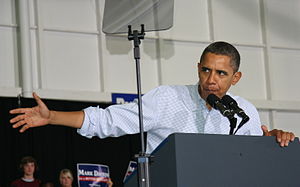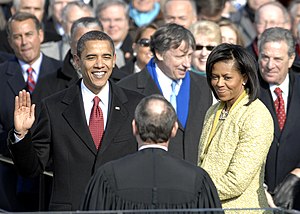 |
| English: Barack Obama speaking at a rally at the University of Minnesota Field House in Minneapolis (Photo credit: Wikipedia) |
The Trayvor Martin Case
By Paramendra Bhagat (www.paramendra.com)
The Trayvor Martin Case has been roiling America. When the incident happened Barack Obama went on television to declare that if he had had a son, he might have looked like Trayvor Martin. Now he has come out to say that 35 years ago he himself might have been Trayvor Martin.
Putting a black man in the White House is quite a slap to 500 years of world history. But race is too deep and complicated an issue to be resolved by one black man's elevation to high office. And Barack Obama just admitted as much. It is gutsy for the guy to talk about it in such plain language.
The details of what happened on that fateful day are hazy and conflicted. But the facts remain that Martin was shot dead and Zimmerman, the killer, has been acquitted by a jury. In February 2012 in a town in Florida Zimmerman, a white Hispanic, was involved with Neighborhood Watch. He was not a police officer but he could legally carry a gun. This happened in a gated community where Martin, a 17 year old African American high school student, was visiting with his father’s fiancée. There is a lot of he said, she said kind of stuff here. But apparently Zimmerman thought of Martin as “suspicious,” and called the police, and then started following around Martin despite being told not to do so by the police. A scuffle ensued. Zimmerman shot Martin dead in supposed self-defense, supposedly permitted by a Florida Law called stand your ground.
The broad context of race cannot be ignored. Why would a black man look suspicious at a place where he had every right to be, and when all he was carrying was skittles? For the same reason that a black man might get followed around in a department store, an experience Obama is intimately aware of. For the same reason that less than two centuries ago a black man was not even fully human according to the US constitution. Or, until 2008, for the same reason that no black man had been deemed fit to lead the country.
Race and gender are broad topics with a lot of texture and details. You cannot talk about race in America, I think, without talking about the Hindu-Muslim issues in India, or the ethnic politics in Nepal. And South Asia is not exactly a shining light for gender justice. But just because there might be hungry children in Somalia does not mean you can push race issues in America under the carpet. This is not the first time it has happened, but the Trayvor Martin case has opened up a fresh debate on race in America. People across the country are marching in protest.
The vast majority of Nepalis in NYC have Indian bosses, but those same Nepalis are prone to the casual use of the word “madisey” – which is equivalent to the n-word as used against blacks – when talking about the Madhesis of Nepal, some of whom are half Indian like me. The core of Jackson Heights is primarily occupied by Indians, Pakistanis and Bangladeshis: Nepalis are few and far between. There are many such micro hurdles in the way of creating a large, positive pan South Asian identity in the neighborhood.
Over 150 years ago the Irish in Boston could vote in city elections even if they were not citizens. The diverse crowd in Queens is not exactly clamoring for the same in the city’s elections. The political consciousness is not there yet.
New York City is the most diverse city in the world, Queens is its largest and most diverse borough. Jackson Heights in the most diverse part of Queens. The 74th Street part might look very Desi, but the 82nd Street part looks pretty Hispanic. Over 50 countries are represented in this neighborhood. The Trayvor Martin case’s reverberations around here might not be the same as, say, in the inner cities of Detroit and Baltimore and Chicago, but there is no doubt diversity brings opportunities and challenges everywhere. NYC is always just one young black male shot by a white cop away from reliving the debate fast and furious.
Barack Obama is famously leery of “singing Kumbaya” or even holding a debate on race as illusory roads to nowhere. Instead he pumped billions into inner city schools not long after assuming office. But I do feel there is a certain value to talking, if only to build new coalitions to bring about further progress on race, to create “a more perfect union.”

























































